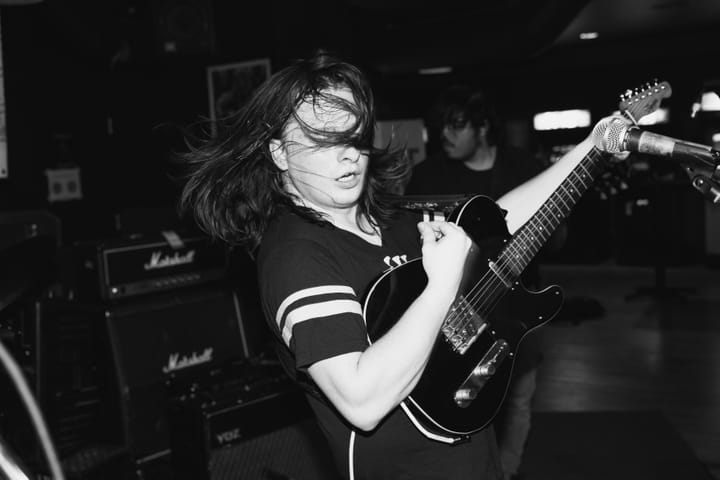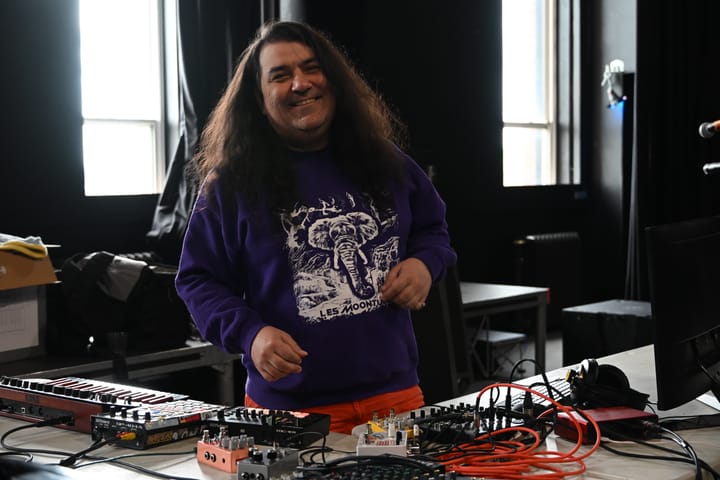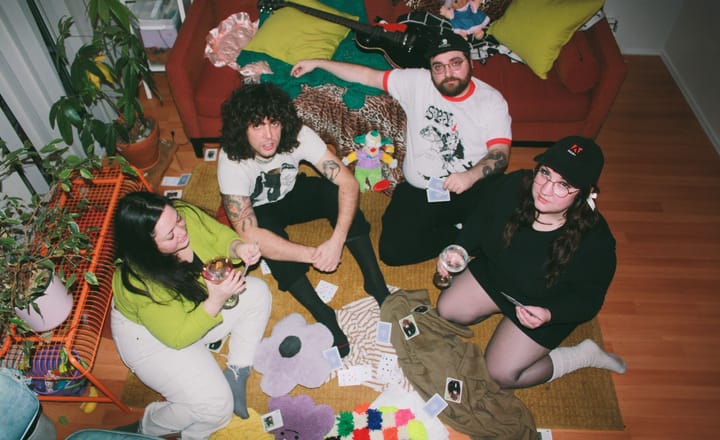
Community Roots on the Rock
If you read any report on the state of music, the outlook is pretty bleak for working musicians. Publications from CBC to The Walrus to Hearing Things have chronicled the worsening conditions for any musician not part of the 1%, from decreasing touring margins and rising rent costs to an increasingly crowded online landscape captured by corporate oligopoly. Two years ago, we themed an issue around these problems with the title: Breaking Point.
This year brought another blow for working artists in so-called Canada, with the draconian crackdown on immigration into the U.S., making it increasingly precarious to attempt a tour in the largest nearby market—and for some marginalized communities, like trans musicians, foreclosing the option entirely.
How can musicians regroup and redirect their energies amidst this landscape? Where can we find alternative modes of building collective art and strength? That was the focus of New Feeling’s panel event at music festival Lawnya Vawnya this year—“Wired For Sound, Rooted In Community”—which sought to make space for talking about the conditions structuring music today and maybe reach towards a few answers.
As a musician and a journalist, I’ve been seeking possible solutions or signs of hope in places like grassroots rock camps or volunteer-run DIY promoters or community initiatives like Lawnya Vawnya. In June, I went to St. John’s, NL, for the 15th edition of the independent music festival, which spotlights the small city’s rowdy underground scene, as well as bringing in groundbreaking experimentalists like Beverly Glenn-Copeland and emerging artists like Montreal MC Fraud Perry.
It wasn’t New Feeling’s first time at the festival, but it was mine, and—like when Tom Beedham attended—what stood out to me as much as the music was the sense of collectivity. Shows, whether at long-standing rock venues like The Ship as well as artist-run community spot The Space, were packed, and everybody seemed to know everybody. The folks behind Lawnya Vawnya have committed to this festival and this artistic community, helping to make St. John’s a hub of activity at the same time as they’re building connections across the country. From the islander alt-country of Andrew Smith to the energetic art-punk of Penny and the Pits, the festival was a welcome reminder of the kind of current that pulses through alternative spaces carved out of hard conditions and—in this case—a whole lot of rock.

That emphasis on committing to your community ran through our Saturday afternoon panel, which featured artists and experts from five different cities: musician Marlaena Moore (Montreal); musician and Barely There label founder Liam Ryan (St. John’s); Mint Records label manager Elysse Cloma (Vancouver) and Music PEI program manager Andy Glydon (Charlottetown).
Over the course of an hour, panelists talked about the barriers facing musicians from smaller Canadian cities and the avenues artists can follow to try and make it work. Moore spoke about touring within Canada, highlighting how you can never really predict which shows will be your most meaningful—a stop in the small city of Kamloops surprised her with a deeply engaged crowd. Ryan talked about starting Barely There records in St. John’s and helping bands book shows around the province, outside of the capital city.
Glydon and Cloma spoke from the industry side, with Glydon emphasizing that provincial music associations have supports to offer to artists, like the recording and release programs at Music PEI as well as showcasing opportunities. Cloma spoke about how each album campaign meets the vision of each artist—not everyone should feel the need to follow the established rules of what makes a career “successful.” Current Mint artist Cassia Hardy, for example, is opting not to release her new album In Relation on vinyl, focusing on a cassette release to reduce environmental impact. That question of what success means is a key one for independent artists: is it millions of streams, or is it maybe selling out your hometown show, or collaborating with artists you love, or founding a new venue together, or getting a review that really gets you? During the Q&A, one attendee said that her career goals are being able to play folk festivals in her 50s and 60s. What it means to be a musician today is in the hands of the maker.
That said: there are still systemic barriers to building the lives and careers we want, and plenty that can be done to make it easier to get there. At the end of the panel, I asked each panelist to share one specific suggestion that would make it easier to be a musician in their city. Here are the answers they gave:
- Marlaena Moore: microgrants! These would make smaller tours or one-off shows, or other kinds of professional development activities, easier to actualize.
- Andy Glydon: interprovincial exchanges! Provincial music associations can develop these initiatives to help artists from rural/remote areas build their audience, as a way to test out a new market with financial support behind them.
- Liam Ryan: grant outreach! Funding bodies could make stronger efforts to connect with smaller communities and artists to help them access funds that already exist.
- Elysse Cloma: tiered grants! Funding options can be too one-size-fits all—tiered grants provide access to different kinds of needs for artists and organizations.
After each panelist responded, Lawnya Vawnya programmer Sarah Harris chimed in that Universal Basic Income would be a good one, to which Elysse Cloma added housing security. The specific proposals above can be enacted by funding bodies and bureaucracies, but to truly improve conditions for artists, we need to improve conditions for all working people in so-called Canada: addressing precarity at the root.
Read more

Sentries: Multifaceted Noise Rock

Step Into Little Stone Crow's World

